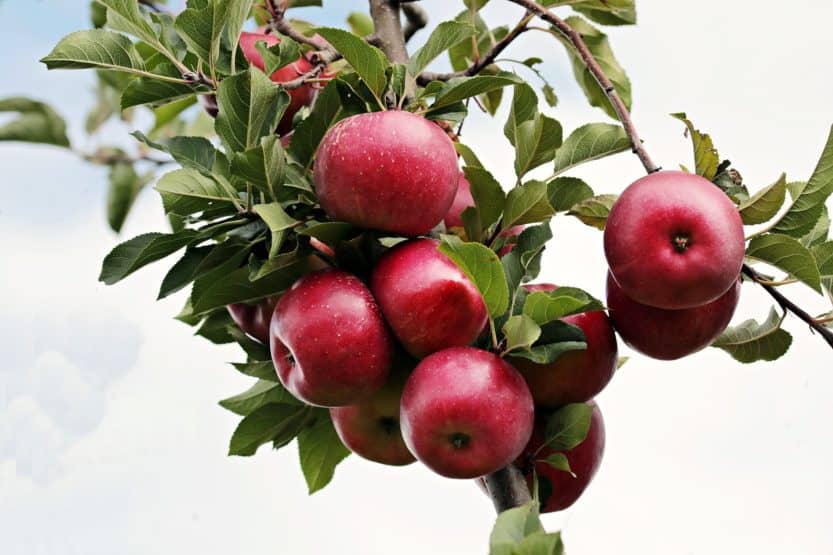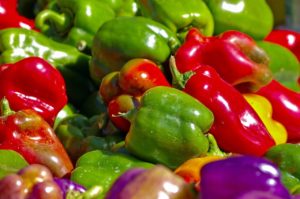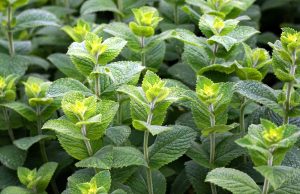Apples are an excellent fruit to plant since they have so many culinary uses, and most people enjoy eating this fruit on a daily basis. Planting a fruit tree is a long-term investment, so care should be taken to select a suitable variety and to be sure the site you have chosen can support the tree over its lifetime.
The good thing is that you have hundreds of choices when it comes to apple varieties. The first consideration when planting an apple tree is the number of chill hours it requires. This might limit some selection in warmer climates, but it is worth considering if you want a good yield. Other factors to consider are the plants’ tolerances to humidity and disease which can be mitigated by purchasing disease-resistant varieties.
Buy Apple Trees Online
| Image | Name | Rating | Shop |
|---|---|---|---|
 | Fuji Apple Tree – Size: 5-6 ft, Live Plant |
Do Apple Trees Need Cross Pollination?
Apple trees require cross pollination to produce a crop, so if your area lacks any apple trees, you will need to purchase more than one tree in order to get any fruit. If space is limited, you can look into acquiring dwarf apple trees. This will allow you to get the cross pollination you need while keeping the space demands of the tree to a minimum.
Dwarf Apple Trees for Small Gardens
Dwarf varieties come in all different colors and flavors, and they can be found with the disease resistant traits that you may need in your location. Another good thing about dwarf apple trees is that you can have more varieties of apples planted in the same space that one standard tree would occupy, even if your growing area is not limited. Dwarf apple trees also tend to give you the first harvest earlier than standard apple trees and, of course, pruning the limbs is much easier.
When Should You Plant Apple Trees?
The best time to purchase an apple tree is in the early spring when the ground has thawed and can easily be worked. In some climates, you can plant an apple tree in the fall, but this is not advisable. You might put the plant at risk of suffering frost injury, due to the fact that its roots have not yet developed.
Most apple trees are planted from bare-root stock, purchased from a local or mail order nursery. These trees are known varieties, grafted onto a specific rootstock, which allows for a wider selection of qualities when selecting your tree. Once you have found the variety you want and you have it in your possession, it is best to get the tree in the ground as soon as possible. If the roots appear to be dry or the plants were mail-ordered, it might be best to soak the roots for twenty-four hours before planting.
Planting Apple Trees
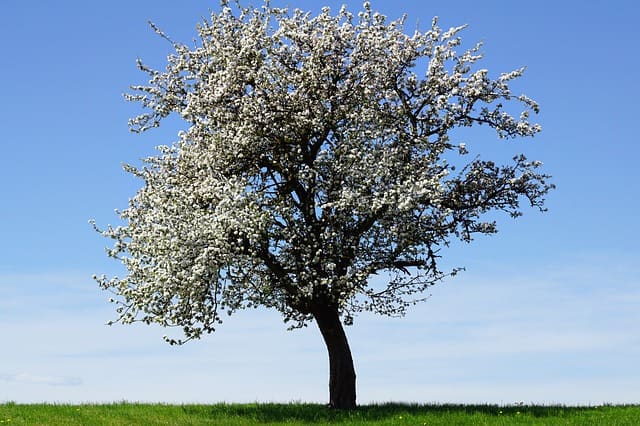
Apple trees need full sun, so make sure you plant them in a spot that gets light for most of the day and will not become obstructed over the lifetime of the tree. They also need a good amount of moisture, so make sure the soil has good moisture retention but is not water-logged, which will damage the tree.
What Kind of Soil do Apple Trees Like?
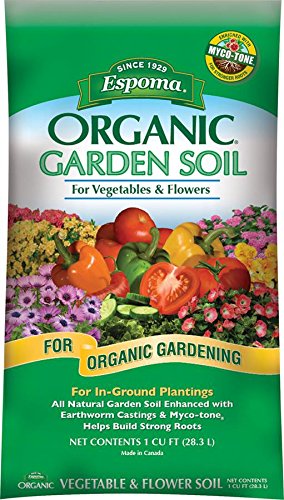
Since this tree will be in its current location for years to come, it is a good idea to test the soil (Buy Online Free Shipping) in the area you plan to plant the tree. If any nutrient deficiencies or pH problems are detected, then rectify them before planting the tree. Once the soil in the surrounding area has been amended, dig a hole about 18 inches deep and mix in some compost, so that the young roots of the tree have a good healthy start.
How Far Apart Should I Plant Apple Trees?
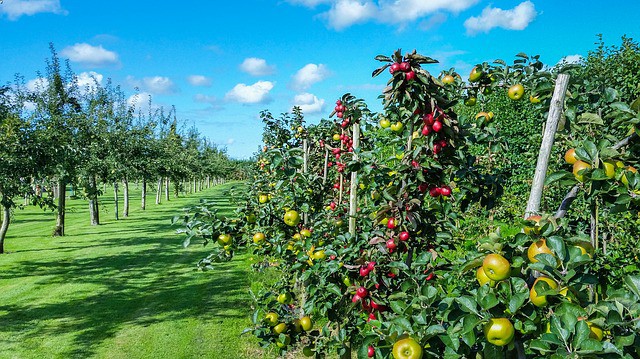
If you are planting dwarf trees, aim for a spacing of 9 feet (3 m); and if you are planting standard trees, place them 15 feet (5 m) apart. Dwarf trees might do well with a trellis for support when they are in full flush, techniques like “espalier” might also be worth considering. Make sure to avoid planting apple trees in frost pockets on your property, as this might lead to dropping buds on the tree in early spring or damage to the tree. If this cannot be avoided, then choose a cultivar that comes out of dormancy and blooms later in the spring.
How Deep Do You Plant Apple Trees?
Once you are ready to put your tree into the ground, dig a hole just deep enough that the roots fit, spread out comfortably, and the crown is 2 inches (5 cm) above the soil line. Make sure the soil underneath the roots is nice and loose so they can quickly establish themselves.
Gently backfill the soil around the tree, while carefully tamping the soil as you add it back in. Make sure as you work that the tree is maintaining its vertical position. Also make sure the graft union is not covered with dirt, as this can lead to disease and the death of the tree. No fertilizer should be added at this time in order to limit the risk of burning the roots.
Water the tree very well, as this will allow the soil to settle by pushing out air pockets, giving the tree a stable base to grow and limiting the risk that the tree will fall over. While the tree is getting established, deeply water it about every week, slowly tapering off to about every two weeks.
Apple Tree Care
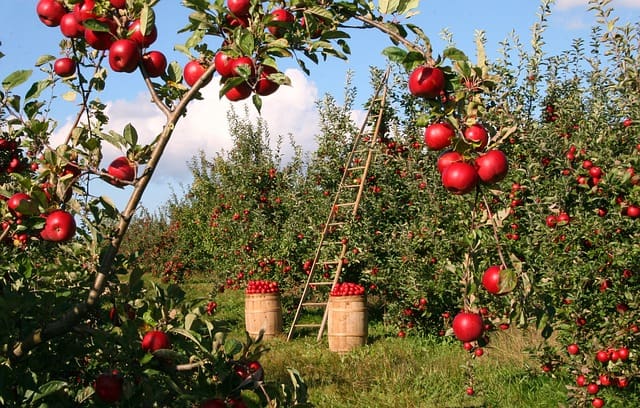
Apple Tree Water Requirements
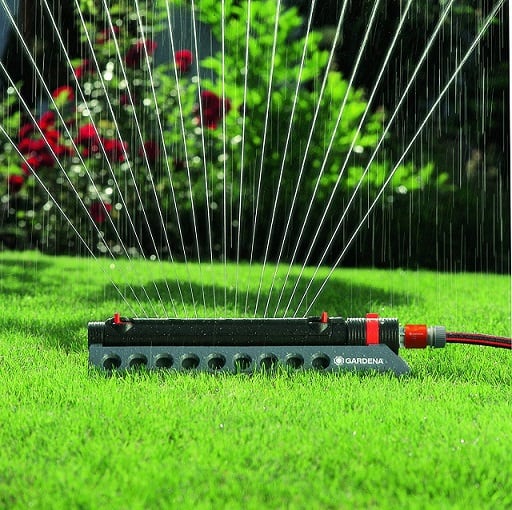
For the first two years maintain this bi-weekly watering schedule, if there isn’t much rain, otherwise let nature take care of the work. As the tree ages, you should water less towards the trunk and more towards the perimeter of the tree, near the drip line of the outer leaves, where the roots are most actively taking up water. Mulch can also be added around the tree, but be careful not to allow the mulch to touch the trunk of the tree since this can encourage rot along the base of the tree.
When Should You Harvest Apples?
When the tree begins to produce its first harvest, it is best to thin the fruit down to just a few well-spaced apples so the branches don’t get overcrowded and break. This will also give you larger individual fruit and better production over the forthcoming years. Harvest times vary for different varieties, but the usual apple harvest period is between August and October. Wait until the apples are easy to remove from the tree and if they resist pulling them off the branch, then wait another week or longer to limit potential damage to the tree.
How Do You Know When Apples Are Ready to be Picked?
You should look for color changes, specific to the cultivar you have chosen, which will give a good indication of when to harvest the fruit. If apples are falling off the tree, then you may have let the fruit become overripe and a quick harvest may be in order. Remove any decaying apples from around the base of your trees because this will harbor insects and other diseases that might damage your tree in the future. Apples can be stored in a cool dark place and can be kept for up to six months. You can also make applesauce or jam for long-term storage.


